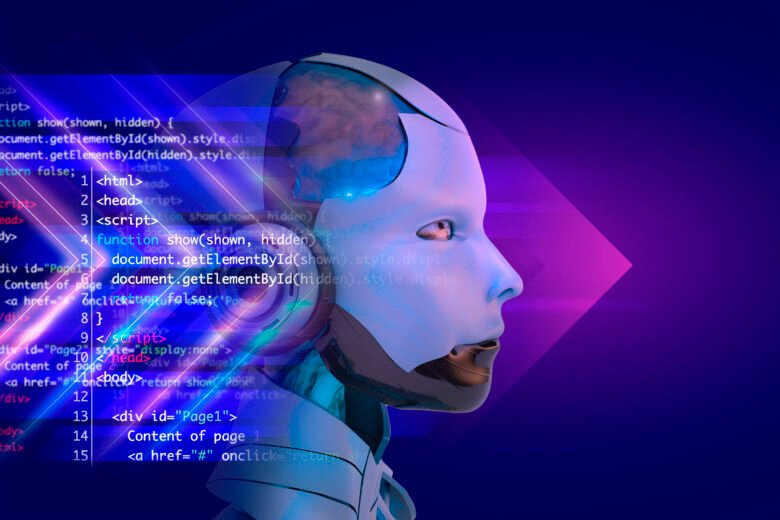Introduction
Defining the Intelligent Interlocutor: The Robot Chatbot
In today’s era of rapid technological advancements, the concept of a robot chatbot has become increasingly prevalent. A robot chatbot can be defined as a computer program designed to simulate human conversation and engage in interactive communication with users. Utilizing a combination of artificial intelligence (AI), natural language processing (NLP), and machine learning algorithms, these sophisticated virtual assistants have revolutionized the way we interact with technology. Chatbots have evolved from their humble beginnings in the 1960s to become highly intelligent and adaptable conversation agents.
The Growing Significance of Robot Chatbots
The increasing importance of robot chatbots in today’s world cannot be overstated. They have transformed customer service, streamlined business operations, revolutionized healthcare practices, and even enhanced educational experiences. These versatile virtual assistants are capable of handling various tasks efficiently while providing an engaging user experience. One significant advantage offered by chatbots is their round-the-clock availability. Unlike humans who require rest and sleep, robot chatbots can tirelessly interact with users at any time of day or night. This 24/7 accessibility ensures that businesses can offer prompt customer support and assistance without time constraints. Moreover, their ability to handle multiple inquiries simultaneously makes them invaluable assets for businesses dealing with high volumes of customer queries. By automating routine tasks such as answering frequently asked questions or providing basic information about products or services, chatbots free up human resources for more complex issues that require personal attention. Robot chatbots also play a crucial role in enhancing efficiency by reducing response times. With their lightning-fast processing capabilities, they can analyze user queries and provide instant, accurate responses, sparing users from the frustration of long waiting times or endless email exchanges.
Evolution of Robot Chatbots
1. Early Beginnings of Chatbots in the 1960s
In order to understand the evolution of robot chatbots, we must first delve into their early beginnings. The concept of chatbots emerged in the 1960s, when computer scientist Joseph Weizenbaum developed ELIZA, one of the first conversational programs. ELIZA utilized simple pattern matching to simulate human conversation by responding to user inputs with pre-programmed scripts. ELIZA paved the way for further advancements in chatbot technology and sparked immense interest in the field. It demonstrated that even limited language processing capabilities could create a human-like interaction experience. However, despite its success, ELIZA was purely rule-based and lacked true artificial intelligence capabilities.
2. Advancements in Natural Language Processing (NLP) and Artificial Intelligence (AI)
One major milestone in the evolution of robot chatbots came with advancements in natural language processing (NLP) and artificial intelligence (AI). NLP refers to a branch of AI that focuses on enabling computers to understand and process human language. It involves tasks such as speech recognition, sentiment analysis, and language generation. With improvements in computational power and data availability, NLP algorithms have become more sophisticated over time. The advent of machine learning algorithms allowed chatbots to learn from large datasets and adapt their responses based on user interactions. This marked a significant leap forward as chatbots could now provide more accurate and contextually relevant responses. Furthermore, advances in AI brought about deep learning models that revolutionized the field of NLP. Deep learning techniques enabled chatbots to analyze vast amounts of unstructured data, such as text or voice inputs, leading to improved speech recognition accuracy and more nuanced understanding of user intent.
3. Integration of Robotics Technology into Chatbot Development
As technology progressed further, the integration of robotics technology into chatbot development became a crucial factor in their evolution. Robotics technology allowed chatbots to interact with the physical world, enabling them to perform tasks beyond simple text-based conversations. Robotic chatbots are equipped with sensors, actuators, and mobility capabilities that enable them to navigate physical spaces and interact with objects. This integration has opened up new possibilities for chatbot applications in various industries such as healthcare, retail, and manufacturing. For instance, in the healthcare sector, robotic chatbots can assist patients by reminding them to take medication or providing emotional support. In retail, they can guide customers through stores or warehouses and help with inventory management. The combination of robotics technology with AI-powered chatbots has truly expanded the potential of human-machine interactions. The evolution of robot chatbots has come a long way since their humble beginnings in the 1960s. Advancements in natural language processing and artificial intelligence have allowed for more sophisticated dialogue systems that can understand and respond to human language.
How Robot Chatbots Work
1. Overview of the Underlying Technologies
Robot chatbots are powered by a combination of sophisticated technologies that enable them to understand and respond to human interactions. These technologies include Natural Language Processing (NLP), Machine Learning algorithms, Deep Learning models, as well as sentiment analysis and emotion recognition capabilities. They work in harmony to ensure an effective and engaging conversational experience.
2. Natural Language Processing (NLP)
At the heart of a robot chatbot’s functionality lies NLP, which allows it to comprehend and interpret human language in a manner similar to how humans do. NLP algorithms enable the chatbot to process text inputs, identify relevant keywords, extract meaning from sentences, and generate appropriate responses. By breaking down sentences into components such as nouns, verbs, adjectives, and adverbs, NLP helps the chatbot understand context and intent.
3. Machine Learning Algorithms
Machine Learning algorithms play a crucial role in enhancing a robot chatbot’s capabilities over time. By ingesting vast amounts of data from user interactions, they learn patterns and trends that help improve response accuracy. These algorithms analyze past conversations to identify successful outcomes and learn from mistakes. Through continuous learning iterations, the chatbot becomes more adept at providing accurate and relevant responses tailored to individual users.
4. Deep Learning Models
Deep Learning models represent the cutting-edge advancements in AI technology that power modern robot chatbots. These models employ artificial neural networks with multiple layers of interconnected nodes that mimic the structure of the human brain. Deep learning enables chatbots to make more nuanced interpretations of user queries by considering context-rich information beyond just isolated keywords or phrases.
5. Sentiment Analysis and Emotion Recognition
To provide a more personalized conversation experience, robot chatbots employ sentiment analysis techniques alongside emotion recognition capabilities. Sentiment analysis algorithms evaluate the emotional tone of user inputs, determining whether the sentiment is positive, negative, or neutral. Emotion recognition technologies enable chatbots to identify and respond appropriately to emotions expressed by users, such as happiness, sadness, anger, or frustration. By adapting their responses to user emotions, chatbots can provide empathetic and supportive interactions. Overall, the combination of NLP, Machine Learning algorithms, Deep Learning models, sentiment analysis, and emotion recognition technology empowers robot chatbots to comprehend and respond intelligently to human language. These underlying technologies contribute to the ever-evolving sophistication of chatbot capabilities as they continue to revolutionize various sectors like customer service, education, healthcare,and beyond.
Types of Robot Chatbots
Rule-based chatbots: Simple, pre-programmed responses based on specific rules or keywords.
Rule-based chatbots, also known as scripted or decision tree chatbots, operate on a set of predefined rules and responses. These bots are designed to recognize particular keywords or phrases in a user’s input and provide corresponding pre-determined answers. This approach is suitable for handling straightforward queries and can provide consistent responses. However, rule-based chatbots lack the ability to understand context beyond the programmed rules, limiting their flexibility and adaptability. One advantage of rule-based chatbots is their simplicity in terms of development and maintenance. Since the responses are predetermined, it is relatively easy to design the conversation flow and create an effective user experience. Additionally, this type of chatbot requires less computational power compared to AI-powered alternatives. However, rule-based chatbots have limitations when faced with complex or ambiguous queries. They struggle to provide meaningful responses beyond what has been explicitly programmed. Consequently, these bots may frustrate users if they cannot comprehend or respond appropriately to nuanced questions.
AI-powered chatbots: Utilize machine learning algorithms to learn from user interactions and improve responses over time.
AI-powered chatbots represent a more advanced breed of conversational agents that utilize machine learning algorithms to enhance their capabilities over time. These bots leverage natural language processing techniques, including sentiment analysis and deep learning models, to understand user input contextually. Unlike rule-based chatbots that rely on predefined rules, AI-powered variants employ techniques such as natural language understanding (NLU) and natural language generation (NLG). Through continuous exposure to user interactions, these chatbots learn patterns in language usage and adapt accordingly by improving response accuracy. One significant advantage of AI-powered chatbots lies in their ability to handle diverse queries effectively. These bots can grasp complex statements with implicit meaning and respond accordingly, providing users with more nuanced and contextually appropriate answers. Moreover, AI chatbots can learn from new user inputs and adapt their responses, ensuring a more personalized user experience.
Social companion robots: Designed to provide emotional support and engage in meaningful conversations.
Social companion robots represent an emerging class of chatbots that aim to provide emotional support and foster meaningful interactions. These bots go beyond functional tasks and prioritize building relationships with users by simulating human-like conversations. Equipped with sophisticated AI algorithms, social companion robots excel at understanding emotions through sentiment analysis and emotion recognition. They can respond empathetically based on the detected sentiment, offering comfort or encouragement when required. Furthermore, these chatbots often possess personality traits that make them engaging conversational partners. The potential applications for social companion robots are broad-ranging. They can be used for mental health support, where individuals may benefit from having someone to talk to during difficult times. Additionally, these bots find utility in elderly care and companionship scenarios where their ability to engage in meaningful conversations can alleviate feelings of loneliness or isolation. While rule-based chatbots rely on predetermined responses based on specific rules or keywords, AI-powered chatbots leverage machine learning algorithms to enhance their understanding of user input over time.
Applications of Robot Chatbots
Business Sector:
Customer Service and Support
In today’s highly digitalized world, businesses are constantly seeking innovative ways to enhance their customer service and support systems. Robot chatbots have emerged as a valuable tool in this regard. By leveraging advanced natural language processing capabilities, these chatbots can engage in real-time conversations with customers, addressing their queries, resolving issues, and providing relevant information. Online chatbot platforms like Zenchat, ChatboxAI, and Chatbot for PC offer businesses user-friendly interfaces to build and deploy customer support bots effectively. Through 24/7 availability and instant responses, chatbots ensure enhanced customer satisfaction while reducing the workload on human agents.
Sales Assistance
Robot chatbots have also found a significant application in sales assistance. With the ability to process large volumes of data quickly, these chatbots can provide personalized product recommendations based on user preferences and past buying behavior. By engaging customers in interactive conversations about their needs and preferences, sales chatbots help businesses generate leads and drive conversions. Additionally, through integration with CRM systems like Salesforce or HubSpot, chatbots can qualify leads, schedule appointments or demos, and even initiate transactions seamlessly.
Data Collection and Analysis
Efficient data collection is essential for businesses to understand consumer behavior patterns and make informed decisions. Robot chatbots play a crucial role in this domain by enabling organizations to gather valuable data through conversational interactions with users. By intelligently extracting information from conversations such as demographics or preferences, companies can acquire insights that aid in improving their products or services. Advanced AI conversation analytics tools further assist in analyzing the collected data at scale for comprehensive market research.
Marketing Campaigns
Chatbot adoption statistics demonstrate that marketers are increasingly recognizing the potential of robot chatbots in executing successful marketing campaigns. These chatbots can act as virtual assistants, guiding users through various stages of the buyer’s journey. By delivering personalized content, engaging storytelling, and interactive experiences, chatbots captivate and retain user attention. Furthermore, by integrating with social media platforms like Facebook Messenger or WhatsApp, chatbots enable businesses to reach wider audiences and drive engagement effectively. Innovative features such as chatbot for images or AI-powered conversational advertising further enhance the impact of marketing campaigns.
Education Sector:
1. Language Learning Assistance
Robot chatbots offer valuable support in language learning programs by providing an interactive environment for practice and improvement. Language learners can engage in conversations with these virtual tutors to practice their speaking skills and receive instant feedback on grammar usage or pronunciation. Chatbot free online platforms like Chatbat or بوت facilitate access to language learning resources across different languages and proficiency levels. With continuous advancements in natural language processing, these chatbots are becoming more sophisticated in understanding context and offering relevant guidance.
2. Tutoring Services
Robot chatbots have also been integrated into tutoring services to provide personalized assistance to students outside of traditional classroom settings. These smart assistants offer explanations, answer questions, and guide students through complex problem-solving processes. By adapting their teaching strategies based on individual learning styles and performance data, tutoring chatbots assist students in achieving their educational goals more effectively.
3. Personalized Feedback for Students
Feedback plays a vital role in student development. Robot chatbots can provide immediate feedback on assignments, quizzes, or essays by analyzing the content against predefined criteria. This enables students to identify areas for improvement promptly and refine their academic skills accordingly.
Healthcare Sector:
A: Patient Engagement and Monitoring
In healthcare settings, robot chatbots are being utilized to enhance patient engagement by delivering personalized support and monitoring services. These chatbots can remind patients to take medications on time, provide information about their conditions, and offer emotional support. Through continuous conversations, chatbots collect valuable health-related data that can be shared with healthcare professionals for remote monitoring purposes.
B: Mental Health Support
Robot chatbots have shown promise in providing mental health support and counseling services. By offering a non-judgmental and confidential platform for individuals to express their concerns and seek guidance, these chatbots contribute to reducing the stigma associated with mental health issues. In collaboration with mental health professionals, they simulate empathetic conversations and provide coping strategies or resources based on individual needs.
C: Health Information Dissemination
The healthcare sector heavily relies on accurate information dissemination to educate individuals about various diseases, preventive measures, or available treatments. Robot chatbots facilitate this process by acting as virtual healthcare assistants capable of delivering reliable information to users promptly. They can respond to queries related to symptoms, medication interactions, or general wellness tips while ensuring accurate and up-to-date information is provided. Robot chatbots offer limitless possibilities across multiple sectors. Whether it’s revolutionizing customer service in the business sector, enhancing educational experiences in schools or universities, or providing valuable assistance in the healthcare industry – these intelligent virtual assistants are transforming how we interact with technology and improving our everyday lives.
Ethical Considerations with Robot Chatbots
Privacy concerns regarding data collection and storage
In the age of digital technology, privacy has become an increasingly important concern. Robot chatbots, being sophisticated programs that interact with users, collect vast amounts of data. These include personal information such as names, email addresses, location details, and even conversations. Privacy concerns arise when this sensitive data is stored or used without proper consent or security measures in place. To address these concerns, companies and developers must prioritize user privacy by implementing robust data protection protocols. This includes encryption techniques to safeguard personal information during transmission and storage. Additionally, clear user consent mechanisms should be put in place to ensure transparency about data collection practices. Furthermore, stringent regulations should be enforced to hold organizations accountable for any misuse or mishandling of user data by robot chatbots. Regular audits and assessments can help identify vulnerabilities in data storage systems and ensure compliance with privacy laws.
Impact on human employment
The rise of robot chatbots has sparked debates surrounding their impact on human employment. As these intelligent systems continue to develop advanced capabilities in customer service, sales assistance, and other sectors previously dominated by humans, concerns about job displacement have emerged. While it is true that some roles traditionally performed by humans may be automated through the use of robot chatbots, it is essential to recognize the potential for new job opportunities that emerge alongside these technological advancements. The creation and maintenance of chatbot automation require skilled professionals like AI developers, linguists specializing in natural language processing (NLP), and conversational designers. Moreover, humans possess unique qualities such as empathy and creativity that cannot be replicated entirely by machines. Therefore, rather than replacing jobs outrightly, robot chatbots can augment human workers’ abilities by handling repetitive tasks efficiently while allowing employees to focus on more intricate problem-solving or empathetic interactions.
Unintended biases in chatbot conversations
Another ethical consideration when it comes to robot chatbots is the potential for unintended biases in their responses. Chatbot algorithms are trained on vast amounts of data, which can include biased or discriminatory content. As a result, there is a risk that chatbot responses might inadvertently perpetuate stereotypes or discriminate against certain groups of people. To mitigate this issue, developers must employ rigorous testing and quality assurance measures during the development phase. This involves carefully curating training datasets to ensure they are diverse and free from bias. Additionally, ongoing monitoring and fine-tuning of chatbot intelligence artificielle must be conducted to address any emerging biases identified through user feedback or real-world interactions. Ethical guidelines should also be established to govern the behavior of robot chatbots and prevent situations where they may engage in harmful or discriminatory dialogues. Transparency in how these systems operate is crucial, allowing users to better understand how decisions are made and ensuring accountability for any unintentional biases that may arise.
Conclusion
Robot chatbots have become an integral part of our digital landscape, offering numerous benefits such as improved customer service experiences and increased efficiency across various sectors. However, it is essential to consider the ethical implications that come with their deployment. Privacy concerns regarding data collection and storage demand robust security measures and transparent user consent mechanisms. The impact on human employment should be viewed as an opportunity for upskilling rather than an outright replacement of jobs. Mitigating unintended biases requires continuous monitoring, diverse training datasets, and adherence to ethical guidelines. By addressing these ethical considerations proactively through responsible development practices and regulatory frameworks, we can harness the potential of robot chatbots while safeguarding privacy, promoting fair treatment, and creating a more inclusive future.








Leave a Reply